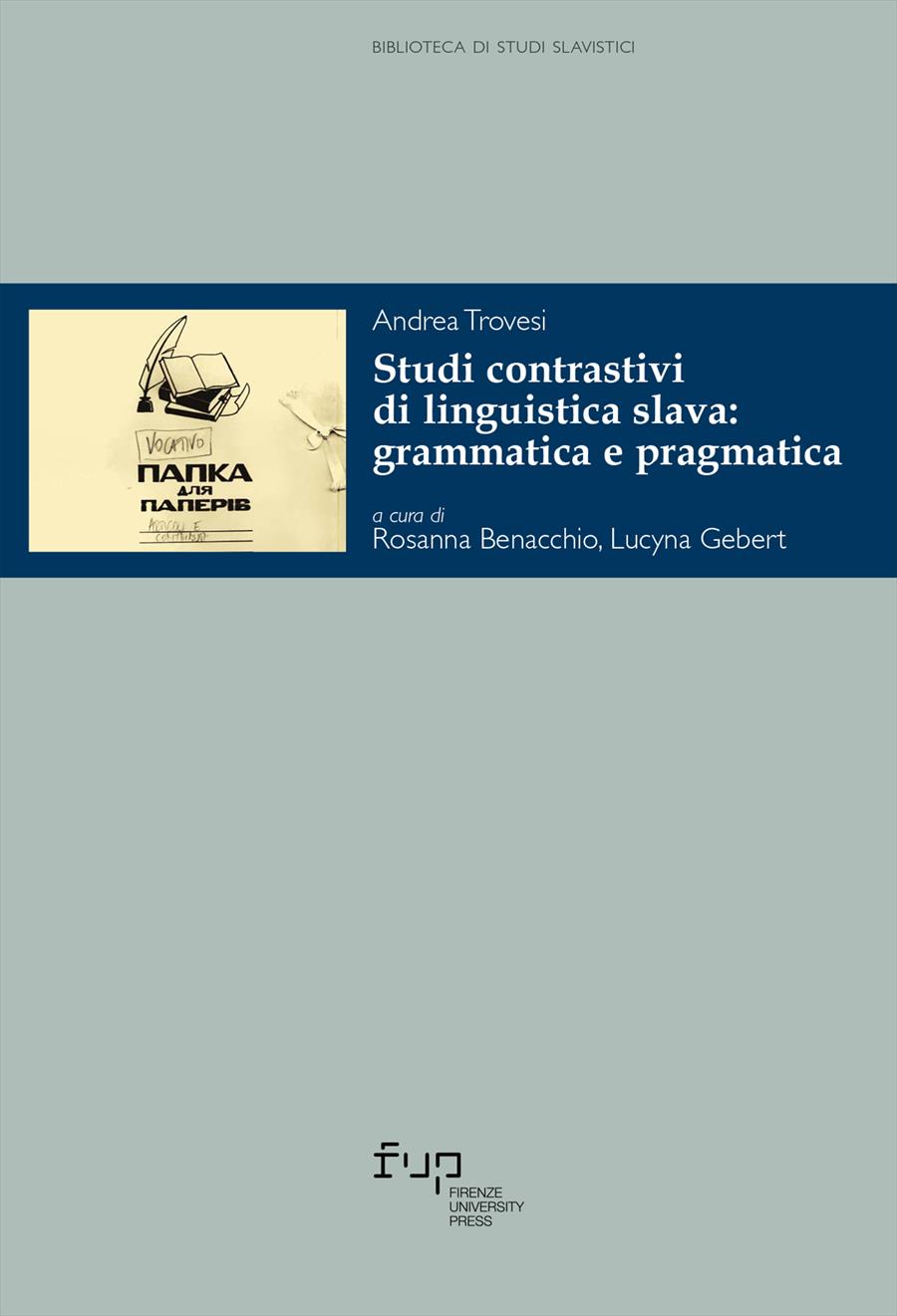Regolarità e irregolarità morfosintattiche del vocativo nei manoscritti paleoslavi Codex Marianus e Codex Zographensis
- Andrea Trovesi
- © 2023 Author(s) |
- CC BY 4.0
- DOI: 10.36253/979-12-215-0216-9.12
In two of the most ancient Old Church Slavonic manuscripts, the Codex Marianus and the Codex Zographensis (10th/11th cent.), the morphologically marked vocative shows a substantial continuity with the inflectional classes by themes of Indo-European origin. From a functional or communicative point of view, the vocative case in both manuscripts is used in all contexts when required. Any evident variation in the use of the vocative as in modern Slavic languages was not detected. The few anomalies recorded concern foreign names (anthroponyms and toponyms), archaisms, such as the vocative of the adjective, or they were presumably induced by the effort to stick to the original Greek text. In general, it holds true that the morphological marking of the vocative case also depends on the philological-linguistic sensitivity of the translators themselves.
- Keywords:
- Vocative case,
- Case endings,
- Communicative functions,
- Old Church Slavonic,
Sapienza University of Rome, Italy - ORCID: 0000-0001-7107-5657
- [GORAZD] Slovník nejstarších staroslověnských památek (GORAZD, Digitální portál staroslověnštiny): http://gorazd.org/?q=cs/node/23 (Ultimo accesso: 10.01.2021).
- Cejtlin, R.M., Večerka, R., Blagova, E. 1994. Staroslavjanskij slovar’ (po rukopisjam X-XI vekov). Moskva: Russkij jazyk.
- Dinekov, P. 1985-2002. Kirilo-Metodievska enciklopedija (v 4 toma). Sofija: Bălgarska akademija na naukite.
- Donati, M. 2013. Il vocativo nel processo identitario dell’interazione linguistica. Prospettive dalle lingue classiche. München: Lincom.
- Dymšic, Z.M. 2001. Grammatika jazyka urdu. Moskva: RAN Vostočnaja literatura.
- Jagić, V. (ed.). 1879. Quattuor evangeliorum Codex glagoliticus olim zographensis. Berolini: Apud Weidmannos.
- Jagić, V. (ed.). 1883. Quattuor Evangeliorum versionis palaeoslovenicae Codex Marianus / Mariinskoe četveroevangelie s primečanijami i priloženijami. Sankt-Peterburg: Tipografija imperatorskoj akademii nauk.
- Koul, O.N. 2008. Modern Hindi Grammar. Springfield: Dunwoody Press.
- Kurz, J. 1969. Učebnice jazyka staroslověnského. Praha: SPN.
- Merk, A. (ed.). 1992. Novum Testamentum Graece et Latine. Romae: Sumptibus Pontificii Instituti Biblici.
- Rusconi, C. 1997. Vocabolario del Greco del Nuovo Testamento. Bologna: EDB.
- Sonnenhauser, B., Noel Aziz Hanna, P. 2013. Introduction: Vocative!. In B. Sonnenhauser, P. Noel Aziz Hanna (eds.). Vocative! Addressing between System and Performance. Berlin-Boston: 1-24.
- Stifter, D. 2013. Vocative for nominative. In B. Sonnenhauser, P. Noel Aziz Hanna (eds.). Vocative! Addressing between System and Performance. Berlin-Boston: 43-85.
- Topolińska, Z. 1973. Vocativus – kategoria gramatyczna. In M. Jelínek, M. Grepl (red.). Otázky slovanské syntaxe, III. Modální vystavby vypovědi v slovanskych jazycích. Brno: Universita J.E. Purkyně: 269-274.
- Trovesi, A. 2008. "Il vocativo nelle lingue slave: un quadro articolato". In A. Trovesi (a cura di). Le lingue slave tra innovazione e conservazione: grammatica e semantica (I Incontro di Linguistica slava; Bergamo, 4-5 maggio 2007). Linguistica e Filologia 26: 207-34.
- Trovesi, A. 2013. Pragmatic Aspects of the Vocative-Nominative Competition in Addressative Function across Slavic Languages. In M. Garzaniti, A. Alberti, M. Perotto, B. Sulpasso (a cura di). Contributi Italiani al XV Congresso Internazionale degli Slavisti (Minsk, 20-27 agosto 2013). Firenze: University Press: 211-227.
- Trovesi, A. 2019. Concorrenza e/o alternanza di ‘vocativo: nominativo’ nei termini volgari in serbo(croato), polacco e bulgaro. Un’analisi qualitativa. In I. Krapova, S. Nistratova, L. Ruvoletto (a cura di). Studi di linguistica slava. Nuove prospettive e metodologie di ricerca (VII Incontro di Linguistica slava). Venezia: Ca’ Foscari: 579-603.
- Večerka, R. 1993. Altkirchenslavische (altbulgarische) Syntax. Bd. 2, Die innere Satzstruktur. Freiburg: Weiher.
- Večerka, R. 1996. Altkirchenslavische (altbulgarische) Syntax. Bd. 3, Die Satztypen: Die einfache Satz. Freiburg: Weiher.
- Walsh, Y. 2014. Forms of Address in Contemporary Ukrainian Newspapers. Morphology, Gender and Pragmatics. Columbus: The Ohio State University.
Chapter Information
Chapter Title
Regolarità e irregolarità morfosintattiche del vocativo nei manoscritti paleoslavi Codex Marianus e Codex Zographensis
Authors
Andrea Trovesi
Language
Italian
DOI
10.36253/979-12-215-0216-9.12
Peer Reviewed
Publication Year
2023
Copyright Information
© 2023 Author(s)
Content License
Metadata License
Bibliographic Information
Book Title
Studi contrastivi di linguistica slava: grammatica e pragmatica
Editors
Rosanna Benacchio, Lucyna Gebert
Authors
Andrea Trovesi
Peer Reviewed
Number of Pages
204
Publication Year
2023
Copyright Information
© 2023 Author(s)
Content License
Metadata License
Publisher Name
Firenze University Press
DOI
10.36253/979-12-215-0216-9
ISBN Print
979-12-215-0215-2
eISBN (pdf)
979-12-215-0216-9
Series Title
Biblioteca di Studi Slavistici
Series ISSN
2612-7687
Series E-ISSN
2612-7679
